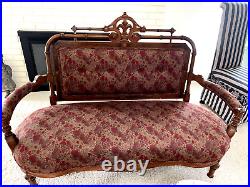


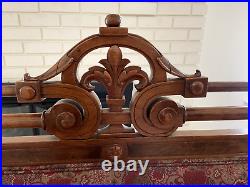

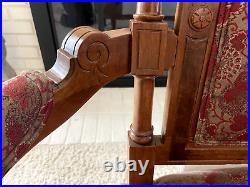
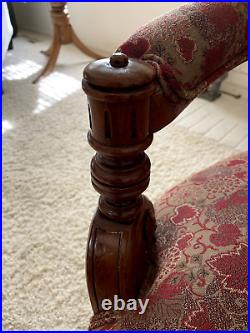
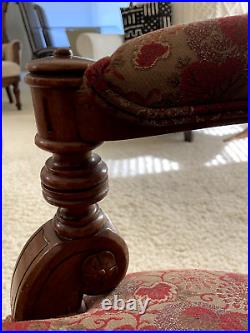


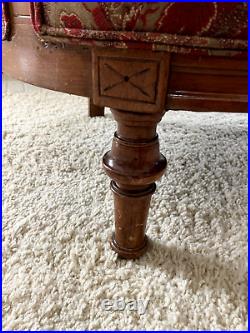

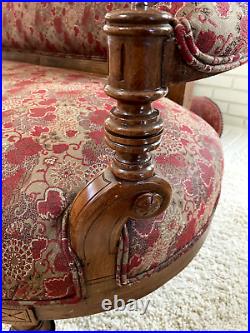

Spectacular Antique Victorian Settee from the. Arts and Crafts Movement of Mid-19th Century England. Ornate arts and crafts, hand-carved details featuring a unique “floating rectangular box” design. Floral brocade upholstery in maroon and gold added in 2005. Armrests with knob handles at the end. This piece was made in the style of William Morris and his follower, Charles Eastlake. William Morris led the Arts and Crafts movement in England in the 19th century and the Craftsman movement paralleled it in America. The settee blends Morris’ style and that of Eastlake. Though the basic design of the settee mimics Eastlake’s direction, his ornamentation tended to be more rigid in nature. He was known for his zigzag, sawtooth borders and bands. However, both he and Morris used simplified flower and plant motifs. The curvilinear cutout lines on this piece feel more like Morris. Morris is known for his flat paneled and squared off chairs but his detailing in his textiles and millwork have more of this feeling. Both were against staining and preferred honest materials. Their style was an overlapping of both Gothic and Greek revival.
Comments are closed.